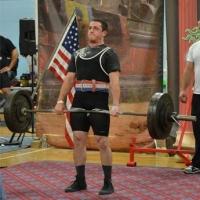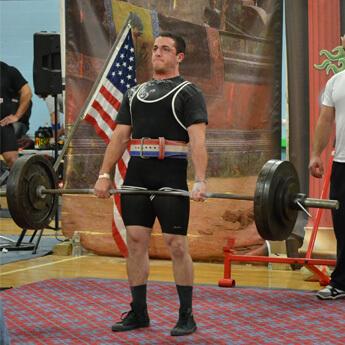Our verdict
Pros
- Grounded minimalist platform
- Basic impact protection for HIIT
- Planted and stable for lifting
- Comfortable for sockless wear
- Highly flexible for planks, lunges, etc.
- Very lightweight
- Excellent breathability
- Protection for rope climbs
Cons
- Fiddly tonge (thin, long, shifty)
- Rockered sole feels unsteady for deadlifts
- Heel bumper protrudes too much
- Not very durable
- Outsole lacks traction
Audience verdict
Comparison
The most similar training shoes compared
+ + Add a shoe | |||||
|---|---|---|---|---|---|
| Audience score | 72 Bad! | 91 Great! | 86 Great! | 77 Decent! | |
| Price | $120 | $120 | $65 | $65 | |
| Use | WorkoutCross-trainingGymHIITJumping rope | WorkoutCross-trainingGymHIITJumping rope | WorkoutCross-trainingGymHIITJumping rope | WorkoutCross-trainingGymHIITJumping rope | |
| Shock absorption | Low | Moderate | Low | High | |
| Energy return | Moderate | Moderate | Moderate | Moderate | |
| Traction | Low | Moderate | - | Low | |
| Drop lab | 2.2 mm | 1.9 mm | 3.4 mm | 4.5 mm | |
| Heel stack lab | 14.0 mm | 21.1 mm | 19.0 mm | 24.2 mm | |
| Forefoot | 11.8 mm | 19.2 mm | 15.6 mm | 19.7 mm | |
| Weight lab | 8.9 oz / 251g | 10.2 oz / 288g | 9.8 oz / 277g | 8.8 oz / 249g | |
| Lightweight | ✓ | ✓ | ✓ | ✓ | |
| Breathability | Breathable | Warm | Moderate | Breathable | |
| Width / fit | Narrow | Narrow | Narrow | Medium | |
| Toebox width | Medium | Narrow | - | Wide | |
| Size | Half size small | Half size small | True to size | Slightly small | |
| Midsole softness | Balanced | Balanced | Firm | Balanced | |
| Stiffness | Moderate | Moderate | Moderate | Moderate | |
| Torsional rigidity | Flexible | Flexible | Flexible | Flexible | |
| Heel counter stiffness | Flexible | Flexible | Flexible | Flexible | |
| Toebox durability | Decent | Good | - | Decent | |
| Heel padding durability | Decent | Good | - | Bad | |
| Outsole durability | Bad | Bad | - | - | |
| Midsole width - forefoot | Average | Very wide | Average | Average | |
| Midsole width - heel | Average | Wide | Average | Average | |
| Widths available | NormalWide | Normal | Normal | Normal | |
| Insole thickness | Thin | Average | Average | Average | |
| Outsole thickness | Average | Thick | Average | ||
| Outsole hardness | Average | Very soft | Average | Average | |
| Heel tab | None | None | None | None | |
| Tongue: gusset type | None | Bootie | None | None | |
| Tongue padding | Thin | Average | Average | Average | |
| Ranking | #32 Bottom 3% | #6 Top 19% | #17 Bottom 48% | #30 Bottom 9% | |
| Popularity | #21 Bottom 36% | #12 Top 37% | #8 Top 25% | #14 Top 43% |
Who should buy
We believe that the New Balance Minimus TR v2 is worth considering if:
- you are looking for a minimalist training shoe that feels very light and low to the ground
- you are transitioning to barefoot shoes but still want some impact protection for HIIT
- you prefer close-fitting trainers that can be worn sockless
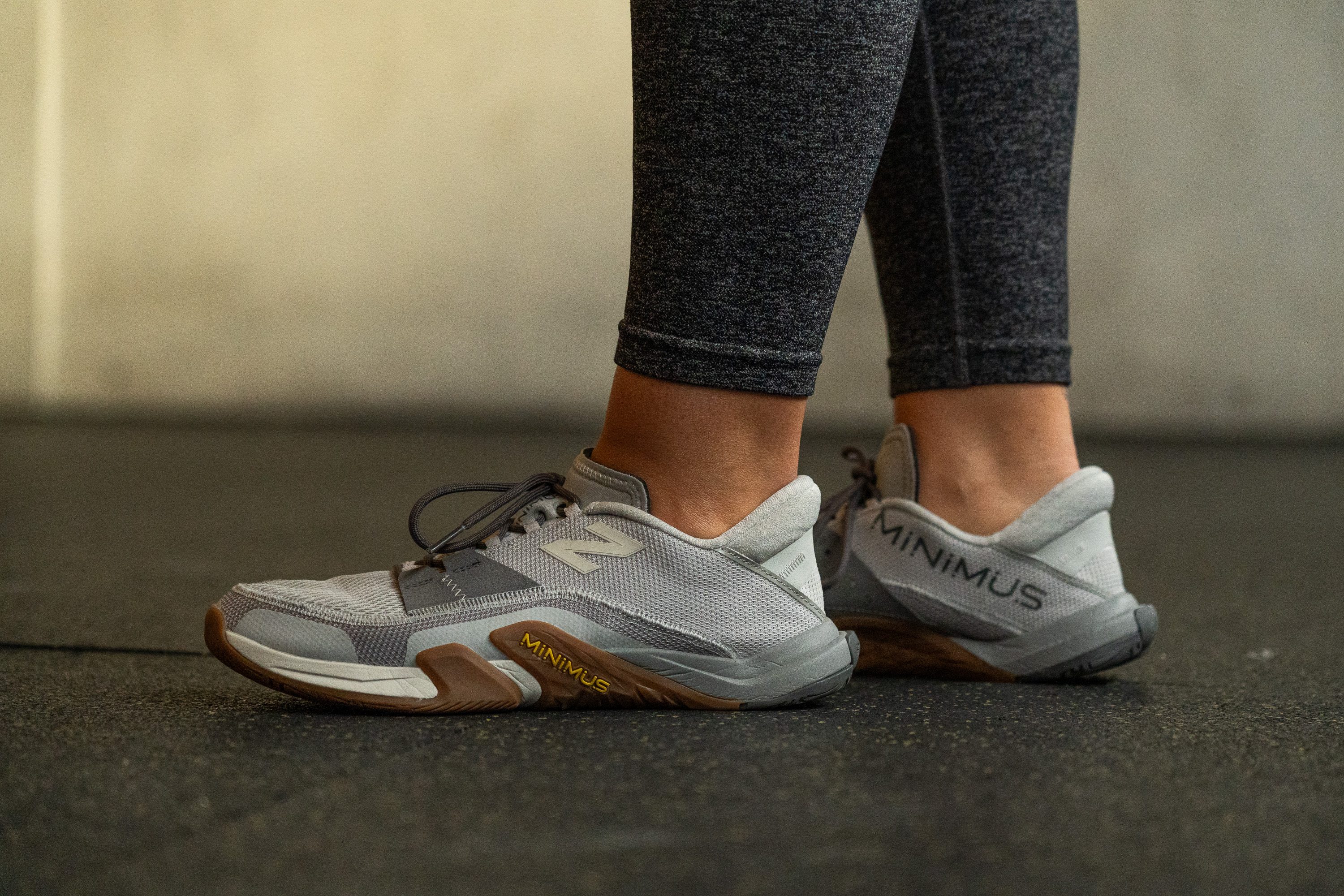
Who should NOT buy
If you are exploring the realm of minimalist cross-trainers, there are a few solid alternatives to the NB Minimus TR v2 that you might as well consider: Altra Solstice XT 2, Reebok Nano 2.0, and Adidas The Total.
All three options provide a very generous toebox space and are better suited for deadlifting because of the flatter sole. Especially, the Adidas The Total as it was made with deadlifting in mind.
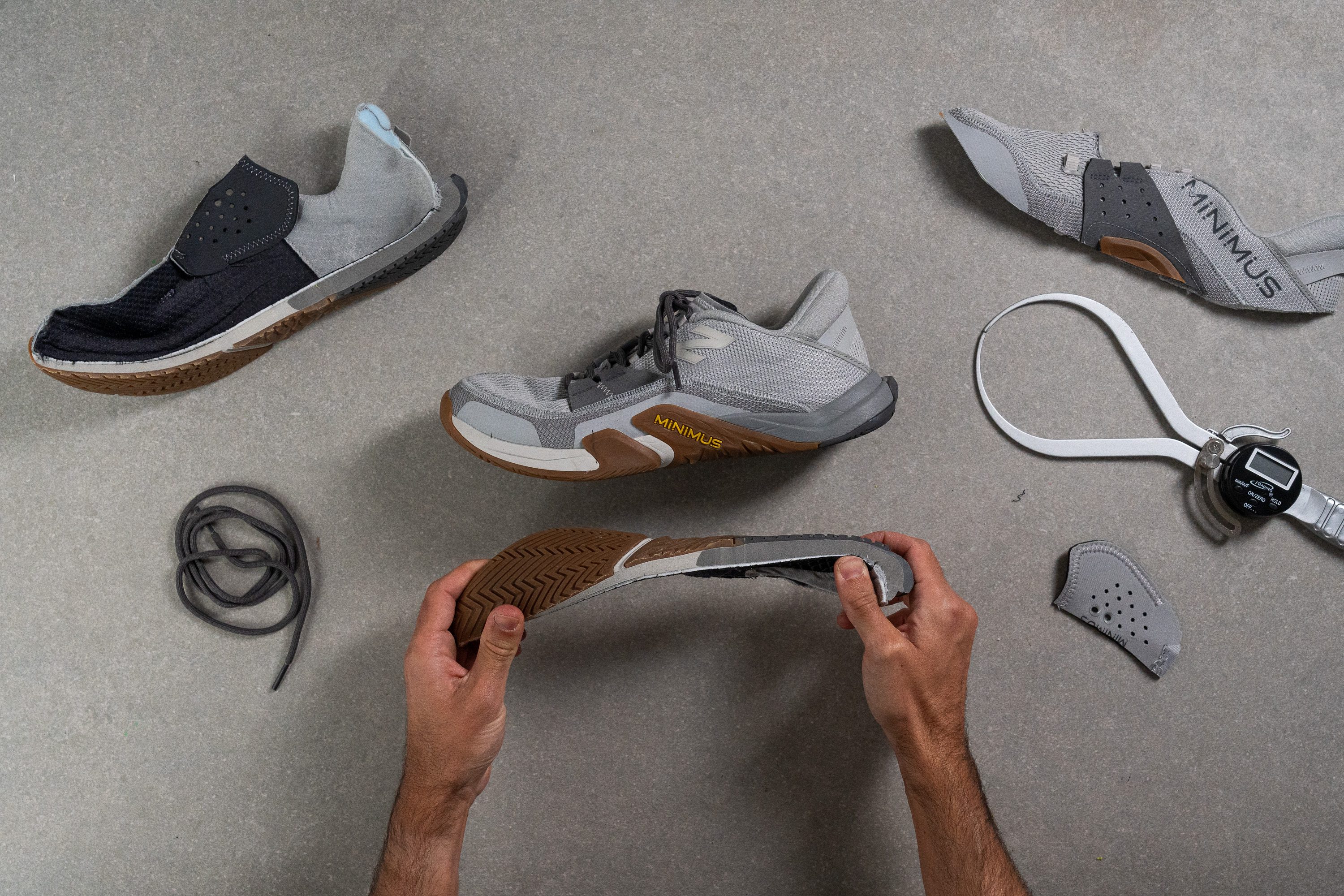
Cushioning
Shock absorption
As a minimalist cross-trainer, the Minimus TR v2 naturally offers more groundedness than cushioning. That's why there is no surprise in its very low shock absorption readings of 64 SA in the heel and 36 SA in the forefoot.

| Minimus TR v2 | 64 SA |
| Average | 81 SA |
Energy return
With a standard energy return of 53.9%, this New Balance trainer is only moderately responsive in the heel.
However, the use of softer foam in the forefoot added a notable springback under our toes. It also reflected in the shoe's above-average energy return of 61.6% in the ball of the foot area. That little boost at the toe-off makes the NB Minimus TR v2 more dynamic compared to a plain barefoot shoe.
| Minimus TR v2 | 53.9% |
| Average | 55.3% |
Heel stack
Intended as a barefoot shoe, we are not surprised that the New Balance Minimus TR v2 has the lowest heel stack of all our tested cross-trainers. According to our caliper measurement, it is only 14.0 mm thick.
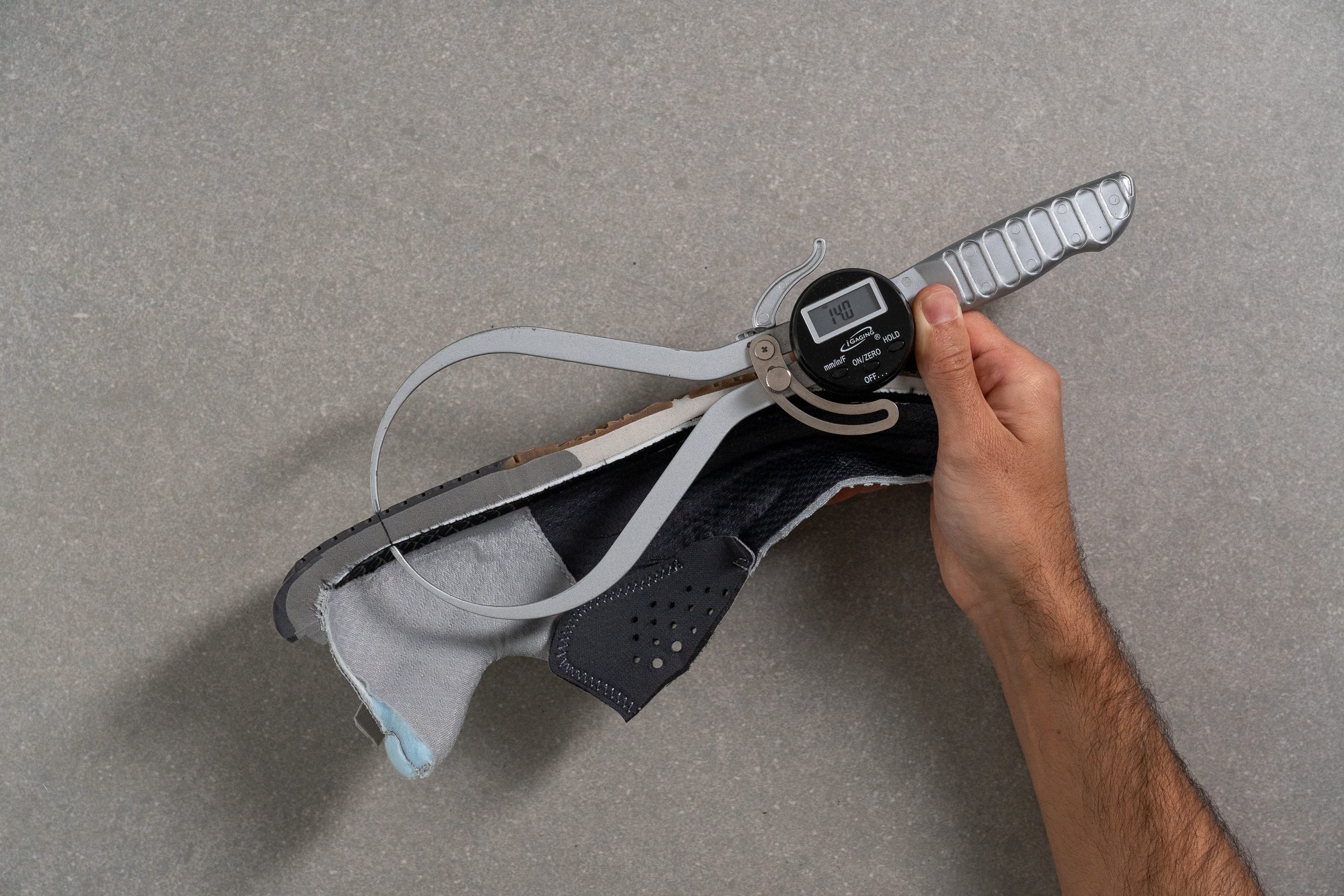
This type of shoe mimics the experience of working out barefoot and offers only the most essential layer of underfoot protection. It feels exceptionally grounded and planted but definitely takes some getting used to if you are transitioning from regular training shoes.
| Minimus TR v2 | 14.0 mm |
| Average | 24.6 mm |
Forefoot stack
The Minimus TR v2 also turned out to have the lowest forefoot stack of only 11.8 mm.
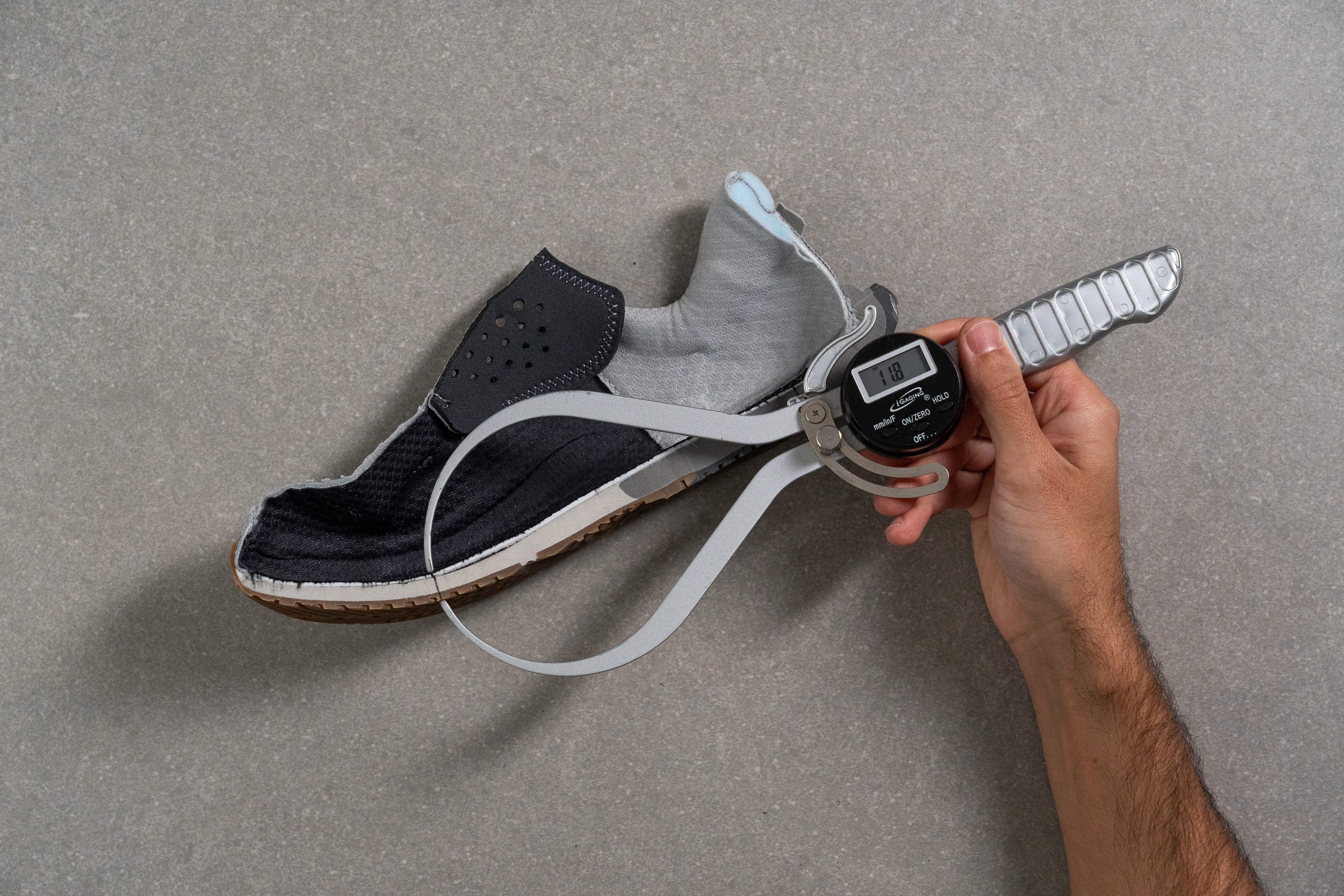
While this setup offers very natural and unhindered movement, please keep in mind that cushioning is practically non-existent here.
High-impact exercises that put a lot of pressure on the ball of the foot (like rope jumping) are going to feel less cushioned and supported in this minimalist trainer.
| Minimus TR v2 | 11.8 mm |
| Average | 18.2 mm |
Drop
We were surprised to discover that the actual heel-to-toe drop of the Minimus TR v2 is even lower than the stated 4 mm!
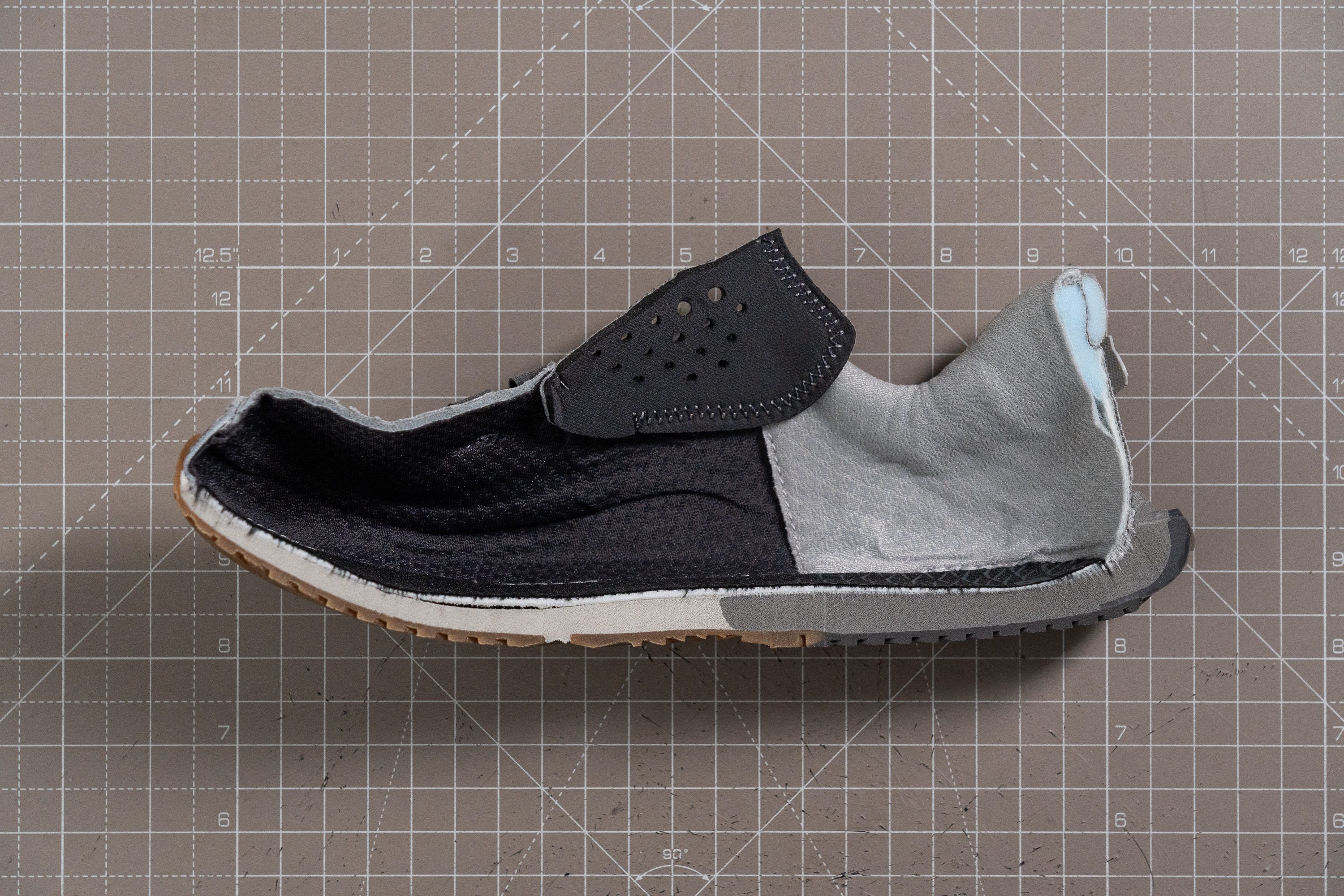
The difference in stack heights showed only 2.2 mm based on our own caliper measurements. We think that barefoot shoe purists are going to be very happy about this fact.
PLEASE NOTE: Having little to no heel elevation in a shoe puts your foot in a very flat position - the same as if it were standing barefoot on the floor. Paired with the shoe's low stack, it offers the benefit of better proprioception and muscle engagement but can backfire in straining the Achilles or other parts of your feet and legs. If this is your first minimalist trainer, we highly recommend taking the transition slowly and consulting your physician if necessary.
| Minimus TR v2 | 2.2 mm |
| Average | 6.3 mm |
Midsole softness
According to the brand, the NB Minimus TR v2 uses FuelCell foam for its midsole. But because the cushioning layer is so thin and dense, it doesn't feel as bouncy as a FuelCell running shoe would.
But the good news is that the foam doesn't feel dead either.
Having cut the shoe in half, we found that its midsole is made of two different-density foams. And because New Balance doesn't mention any other foam in the specs, we assume that these are just two densities of the FuelCell.
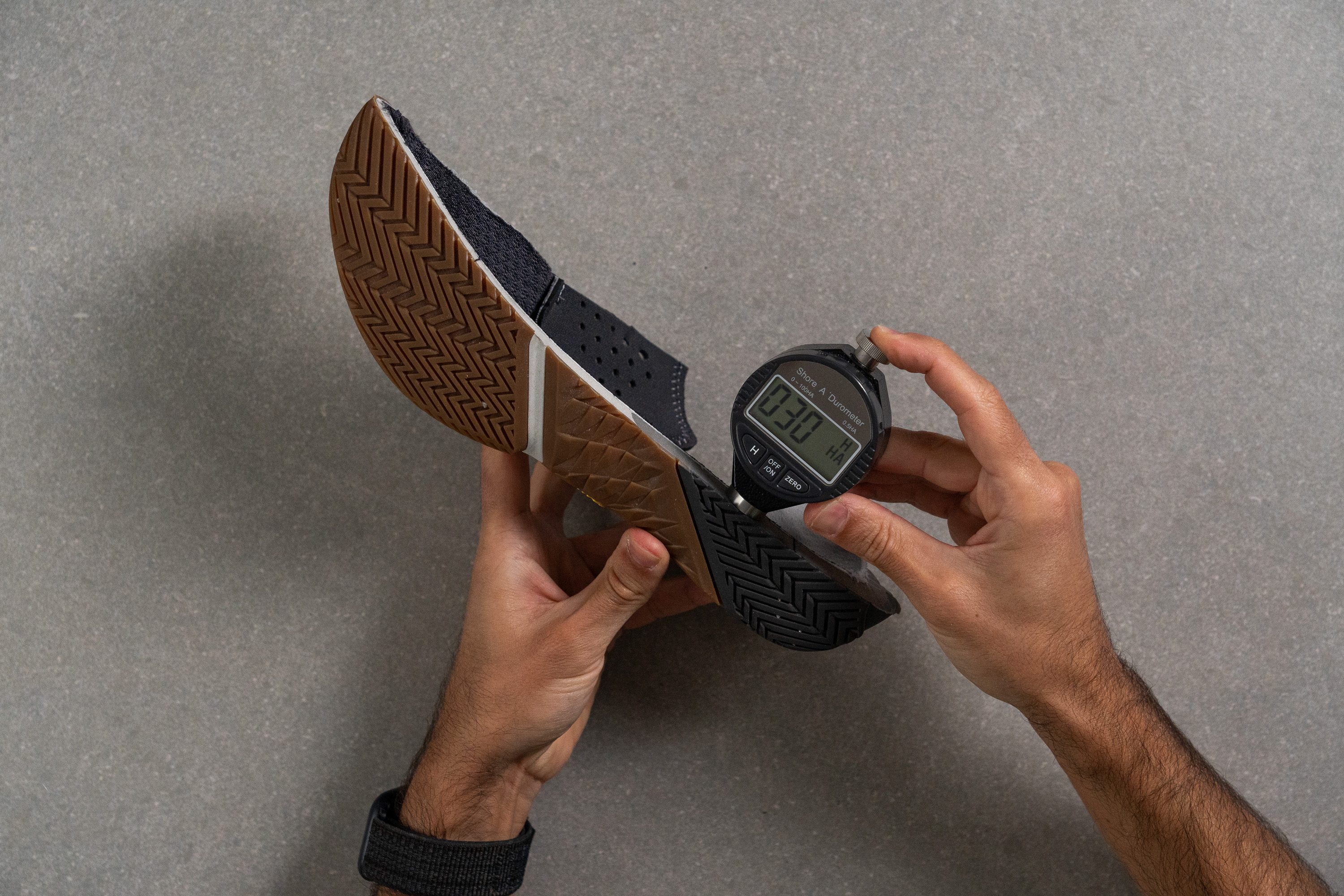
As a cross-training shoe, it makes sense that the firmer foam is placed in the heel for better balance and stability. Pressing our Shore A durometer against the darker compound returned a higher reading of 30.0 HA. It is a firm type of foam that is less prone to compression under weight.
| Minimus TR v2 | 30.0 HA |
| Average | 27.8 HA |
Secondary foam softness
However, the forefoot portion of the midsole is notably softer. Our durometer showed a low reading of 22.0 HA which is 36% softer than the shoe's heel foam.
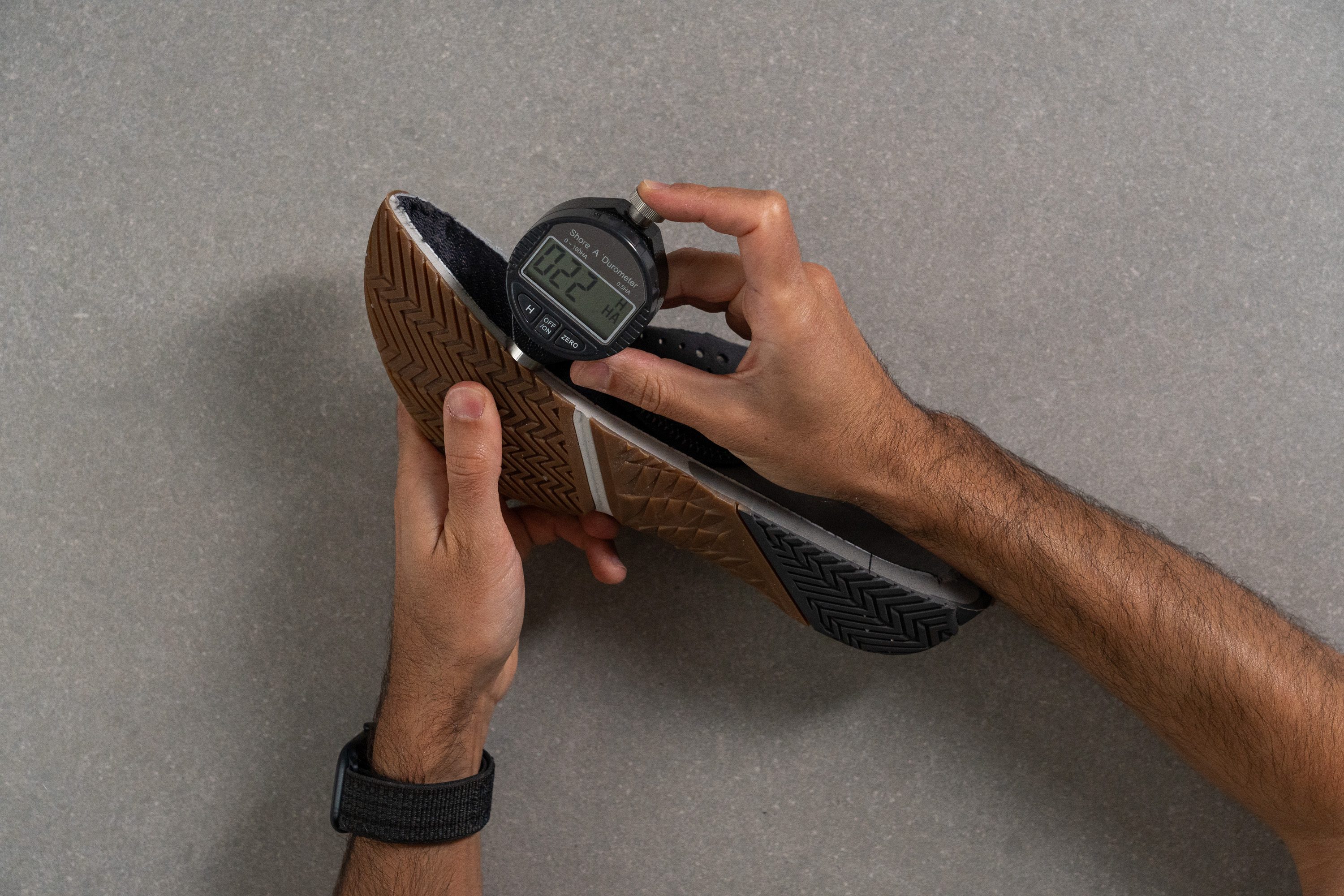
It makes the platform a bit more forgiving for jumps and high-impact exercises where you spend most of the workout on your toes.
| Minimus TR v2 | 22.0 HA |
| Average | 37.2 HA |
Size and fit
Size
Width / Fit
As a minimalist shoe, the Minimus TR v2 is supposed to feel like a second skin. But we think its snug-fitting interiors may feel too close to some people's skin.
To let you know exactly how much internal space to expect in this trainer, we created the mold of its interiors using proprietary gel.
Measuring the mold in its widest part (between the first and fifth metatarsals), our caliper showed a very narrow reading of 92.8 mm. Because of that, we think that this NB trainer is most suitable for athletes with medium-to-narrow feet and those who enjoy a close-fitting shoe. Wide footers, on the other hand, should opt for the shoe's wide option (2E for men and D for women).
We also found that wearing this New Balance shoe without socks makes the fit less restrictive and more glove-like. Even the brand claims that the trainer's soft inner lining is intended for sockless wear.

| Minimus TR v2 | 92.8 mm |
| Average | 97.4 mm |
Toebox width
Gladly, there is no aggressive tapering in the toebox. But it did show a slightly narrower-than-average reading of 71.9 mm in the big toe area.
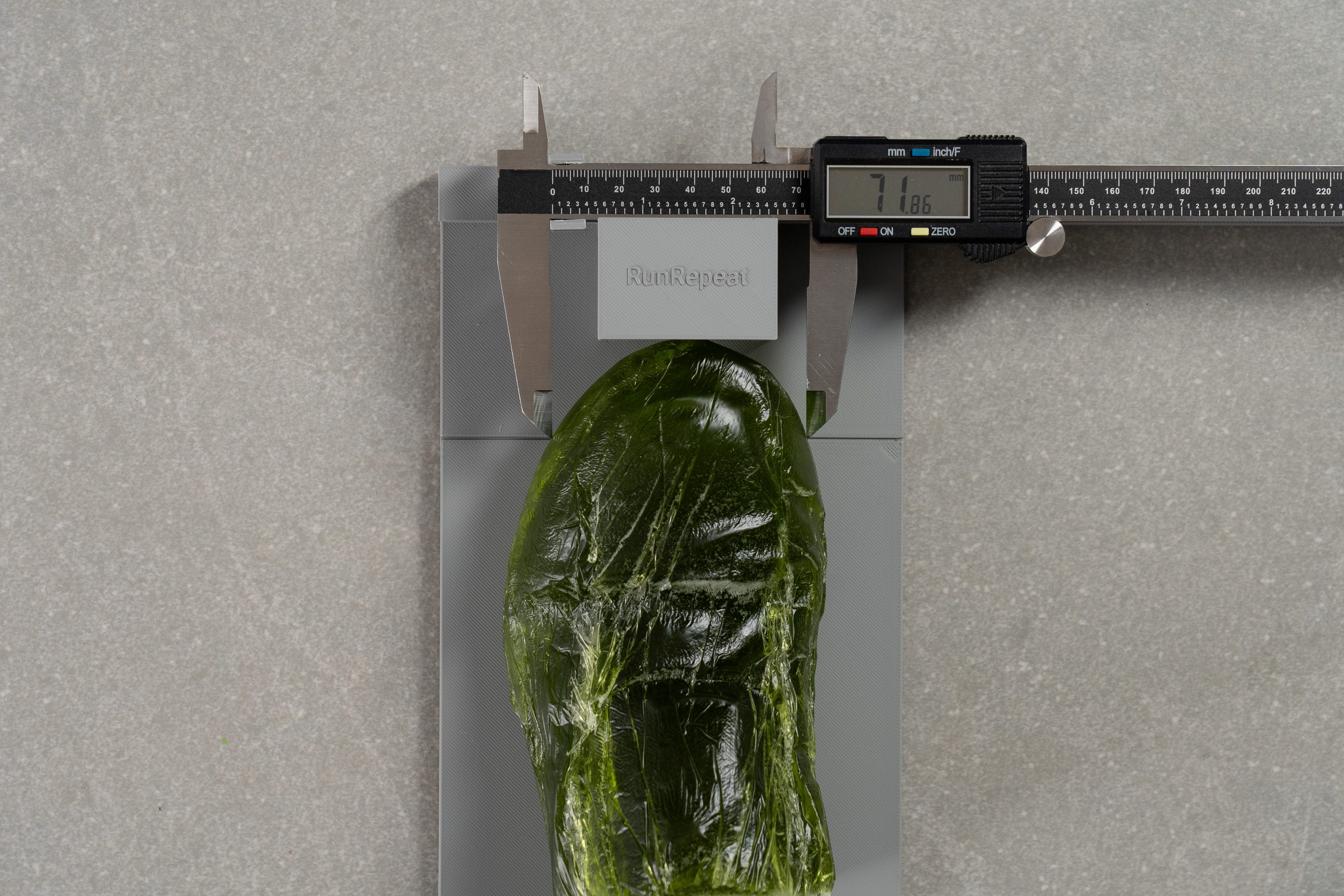
| Minimus TR v2 | 71.9 mm |
| Average | 73.8 mm |
Toebox height
Oddly, as snug as the TRNR v2 feels on the sides of the foot, it offers a ton of space on top of the toes! Our caliper measured a whopping 34.0 mm of vertical space.
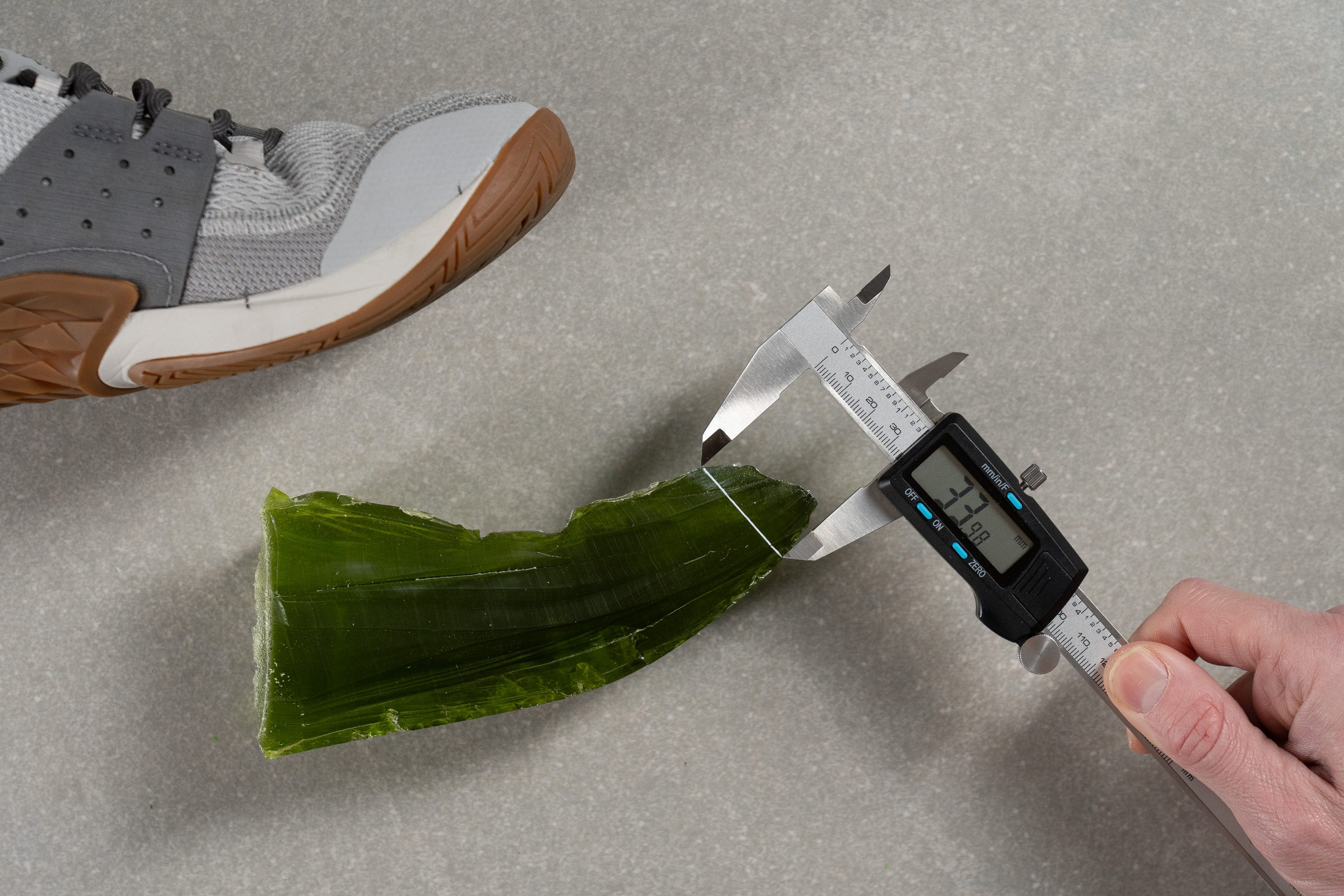
No wonder the shoe's toebox material bunched up so much.
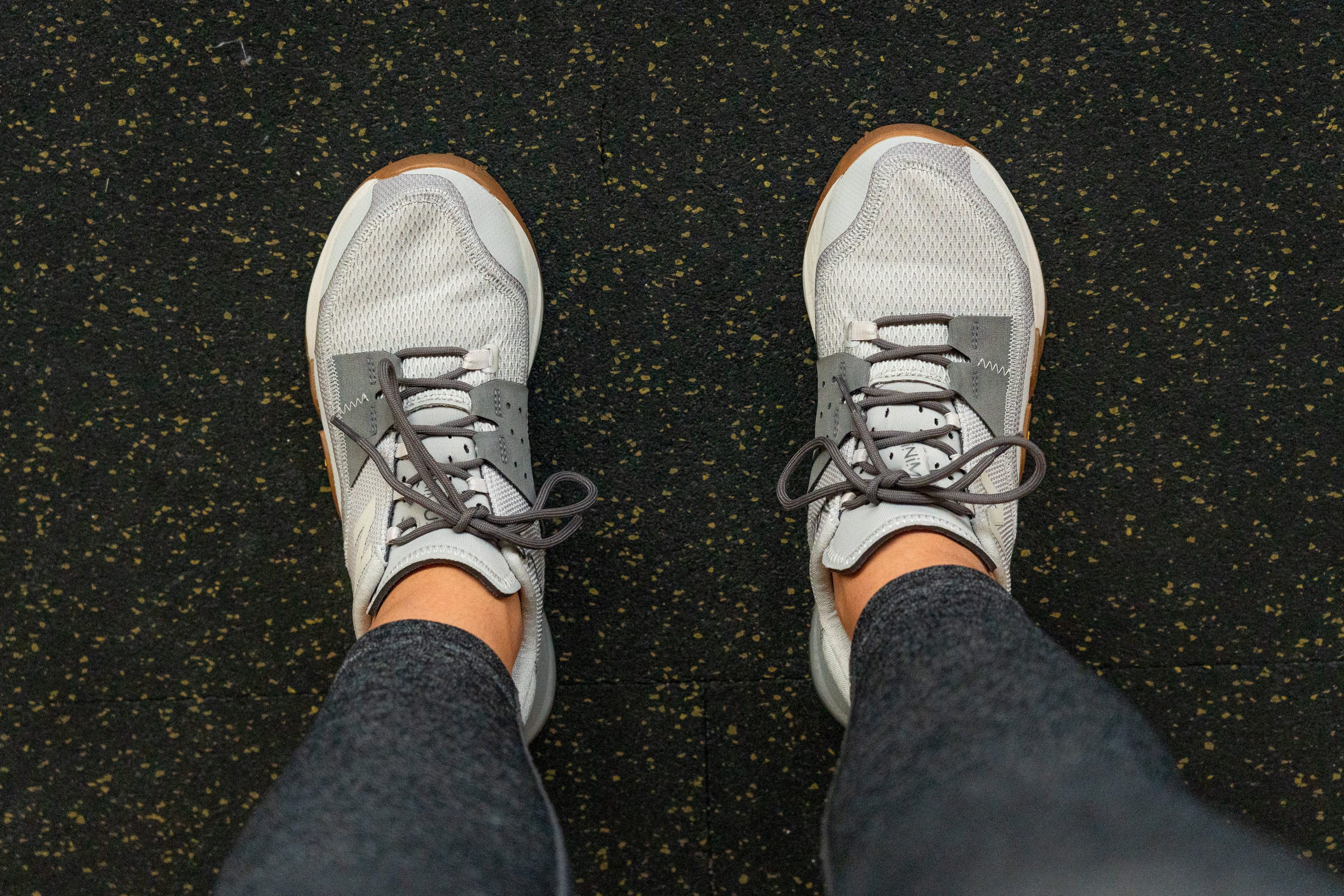
| Minimus TR v2 | 34.0 mm |
| Average | 27.4 mm |
Traction / Grip
Traction test
Brushing the Minimus' forefoot against wet concrete, our grip testing machine recorded a good friction score of 0.28. Even though it's not particularly tacky, the shoe's rubber outsole works great on most common gym floorings like rubber, hardwood, and polished concrete. You can even expect decent traction if these surfaces get a little wet from sweat and tears.
| Minimus TR v2 | 0.28 |
| Average | 0.33 |
Outsole design
The NB Minimus TR v2 relies on a herringbone tread pattern to provide grip in the heel and forefoot. Meanwhile, its midfoot features a notably more aggressive texture which is specifically meant to bite the rope.

Flexibility / Stiffness
Another benefit of a minimalist shoe? Absolute freedom to bend your foot like there is no shoe at all.
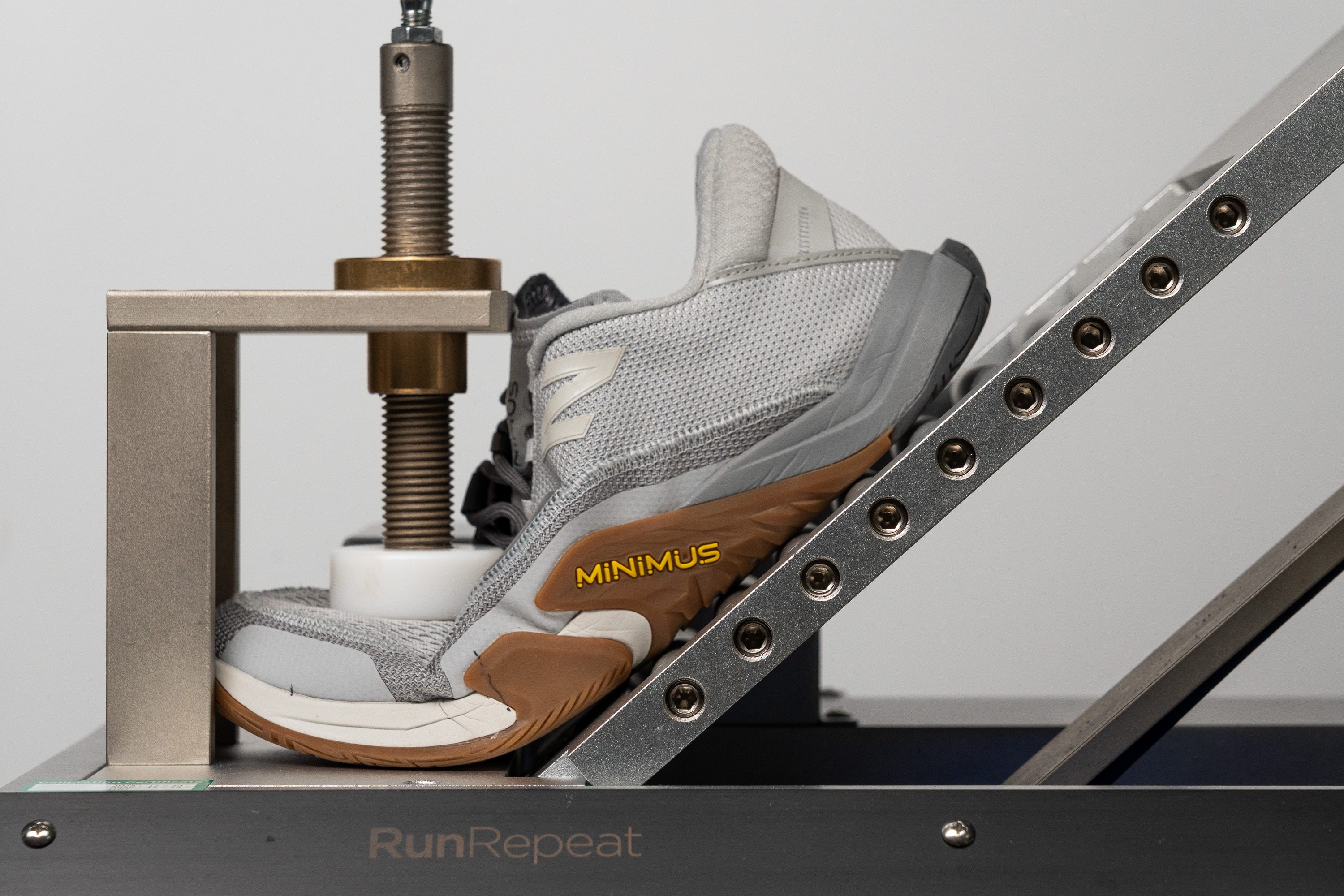
Our shoe flexibility tester showed that the Minimus TR v2 needs only 8.7N to bend to a 30-degree angle. That is notably less than it takes an average training shoe.
We loved how agreeable this NB trainer was for planks, burpees, lunges, and agility training.
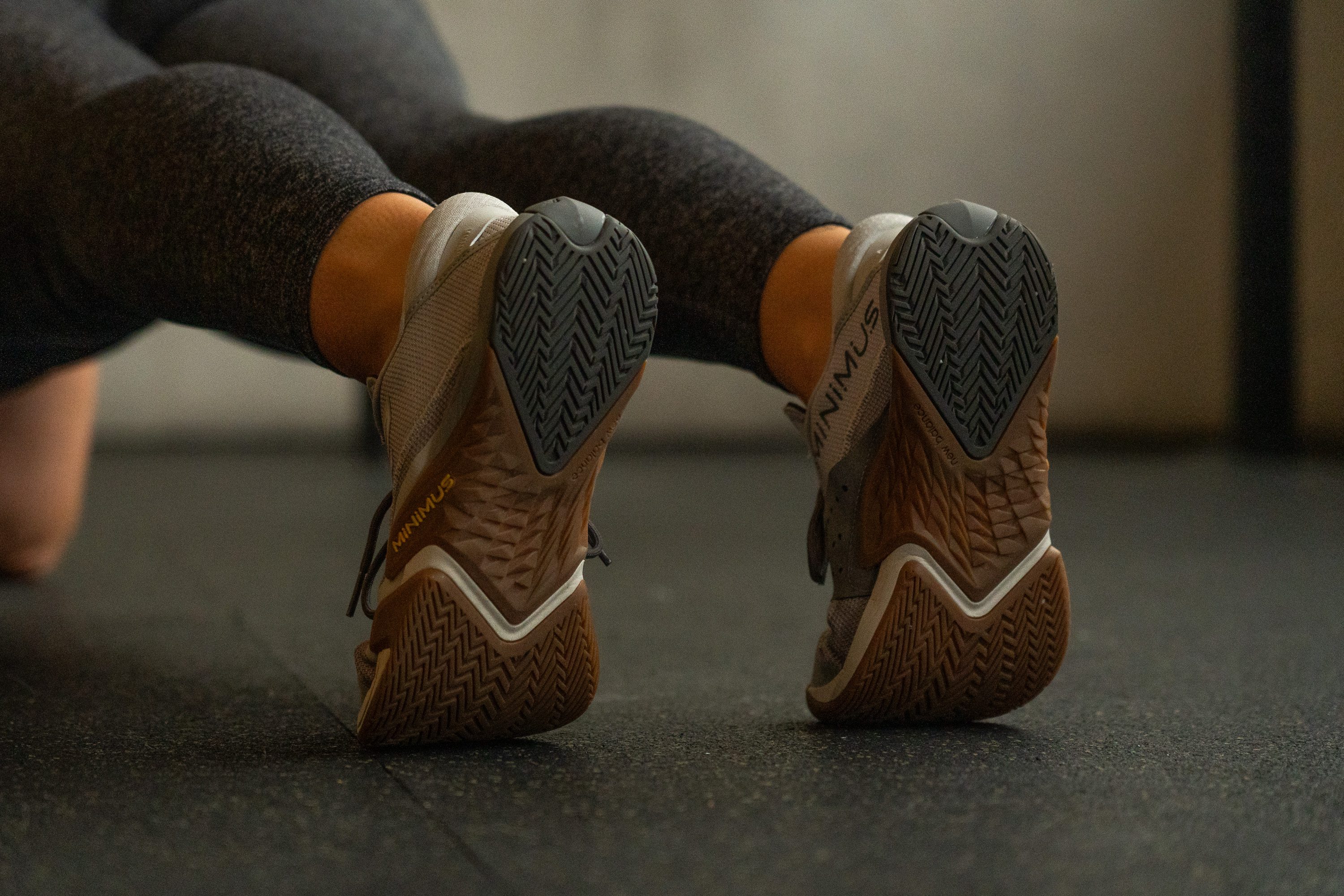
| Minimus TR v2 | 8.7N |
| Average | 10.1N |
Weight
Even though the 2nd version of the Minimus TR gained about 1.6 oz, it is still one of the lightest cross-trainers on the market.
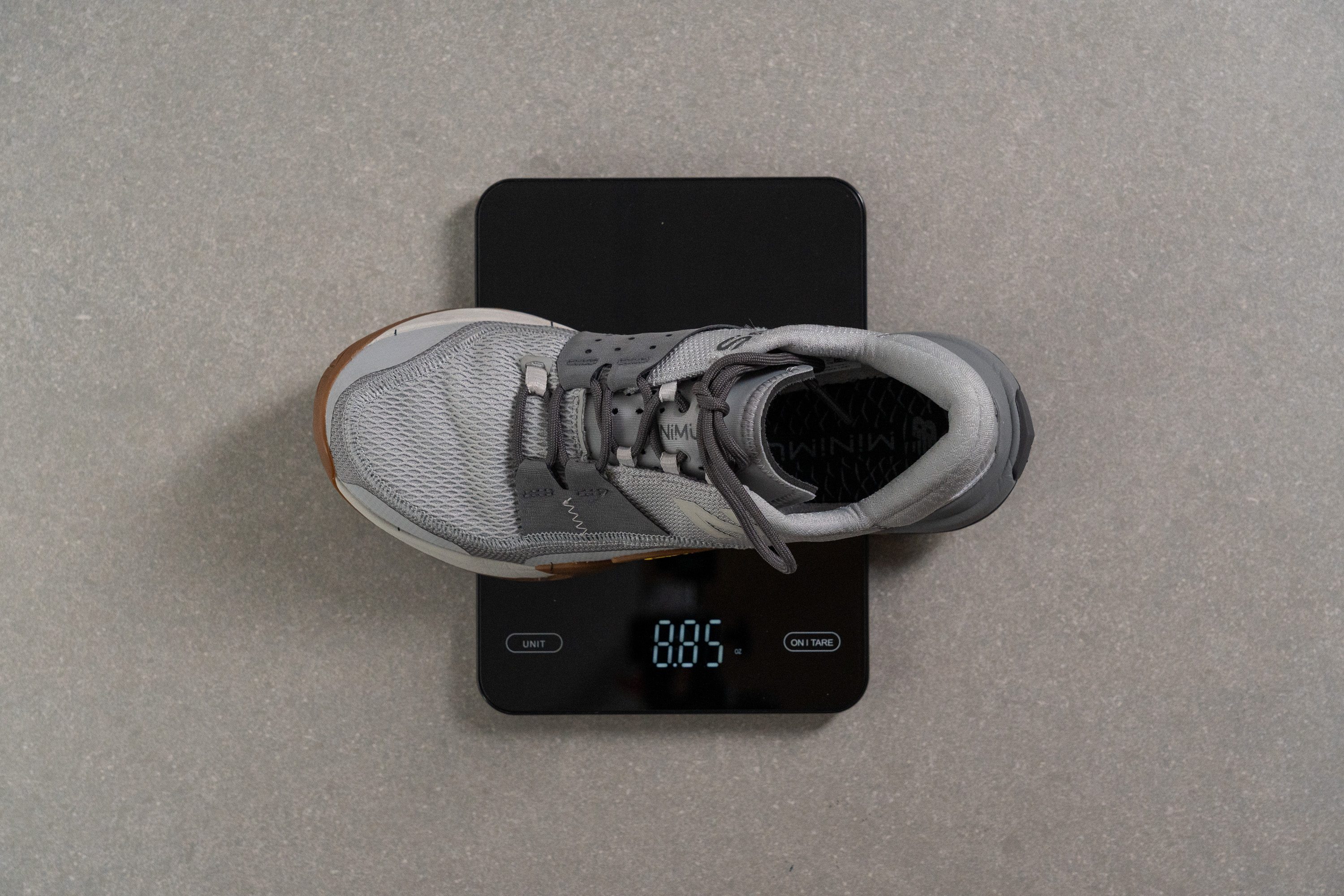
Tipping the scale at 8.9 oz (251g) in a men's US size 9, it is 1.5 oz lighter than the average gym shoe.

In addition, its extra low stack, airy upper, and highly flexible construction help the New Balance Minimus TR v2 disappear on foot!
| Minimus TR v2 | 8.9 oz (251g) |
| Average | 10.8 oz (306g) |
Breathability
While the original Minimus TR struggled with breathability, the TR v2 managed to provide fantastic ventilation!
Putting the shoe through our breathability test, we saw large puffs of smoke rapidly escape through the toebox. This came as a surprise because the fabric did not appear very porous through the lens of our microscope.
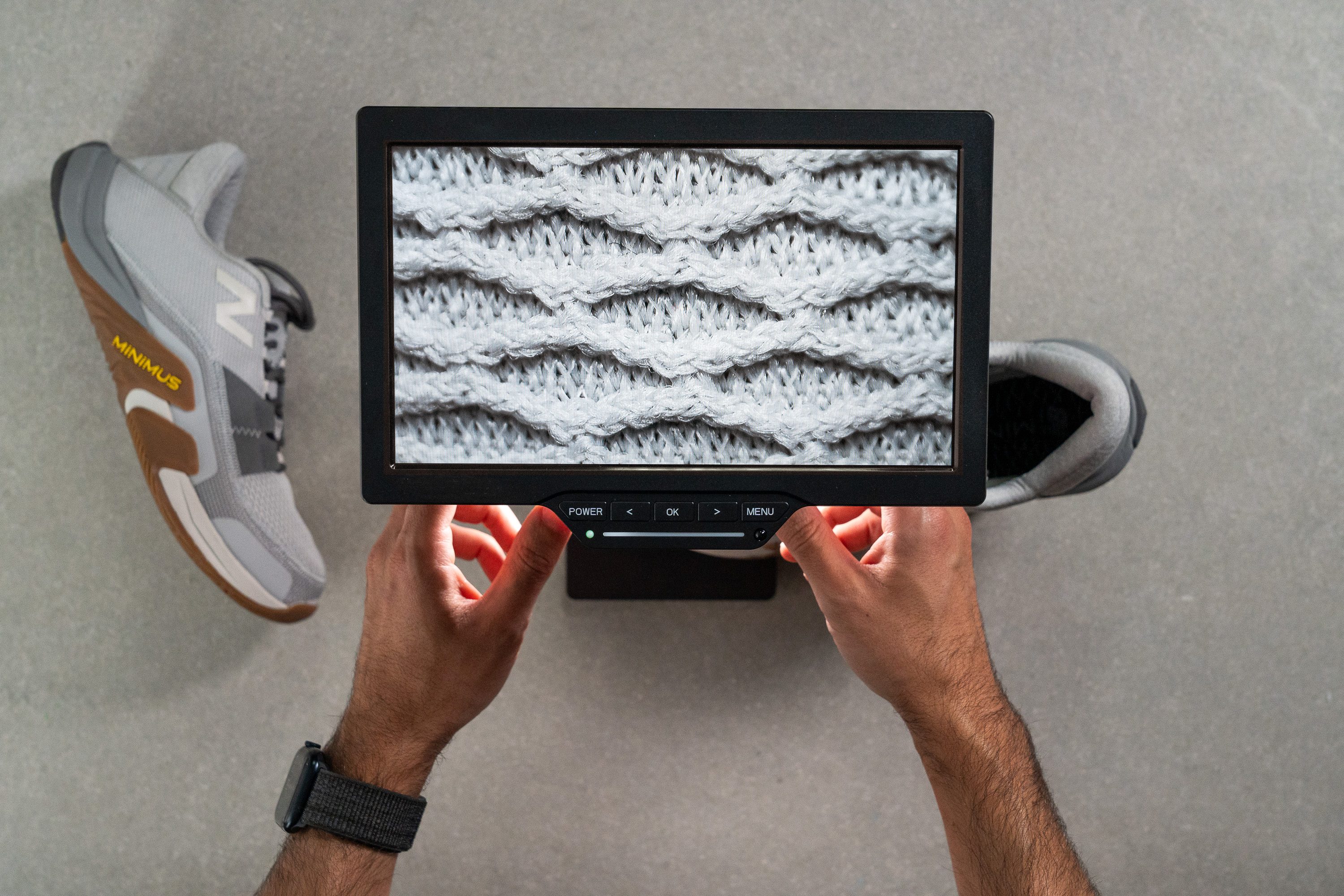
Despite its densely woven nature, the shoe's upper textile felt very nice and airy on foot.

But mesh is not the only source of airflow in the Minimus TR v2. When we hovered its half-cut upper over the LED light, we saw sizable perforations all over the tongue as well.
With all these findings on top of our positive on-foot experience, we readily gave this New Balance trainer the highest breathability score - 5 out of 5!
| Minimus TR v2 | 5 |
| Average | 3.6 |
Stability
Lateral stability test
It's hard to complain about the lateral stability of a minimalist training shoe. When your feet sit so close to the ground, it is nearly impossible for them to buckle over.
Be it squatting with heavy weight or doing lateral shuffles, the Minimus TR v2 kept us planted and surefooted.

Torsional rigidity
Aside from the shoe's inherent stability as a barefoot trainer, there is no support whatsoever. This New Balance trainer is meant to move along with the foot like it doesn't even exist.
Twisting it in our manual test revealed the complete absence of torsional rigidity in the Minimus TR v2. On a 1-5 stiffness scale where 5 is the stiffest, it gets the lowest score of 1.
| Minimus TR v2 | 1 |
| Average | 2.8 |
Heel counter stiffness
Don't let the shoe's puffed collar mislead you. Aside from being very generously padded, it has no structure and hardly offers any heel hold either.
We gave it 2 out of 5 only because of the padding.
| Minimus TR v2 | 2 |
| Average | 2.7 |
Midsole width - forefoot
Measuring the platform dimensions of the NB Minimus TR v2, we didn't find it particularly wide.

Our caliper returned a standard reading of 111.6 mm in the widest part of the shoe's forefoot. But we have nothing to complain about - the lateral and medial flanges proved to be wide enough to keep us steady during the workout session.
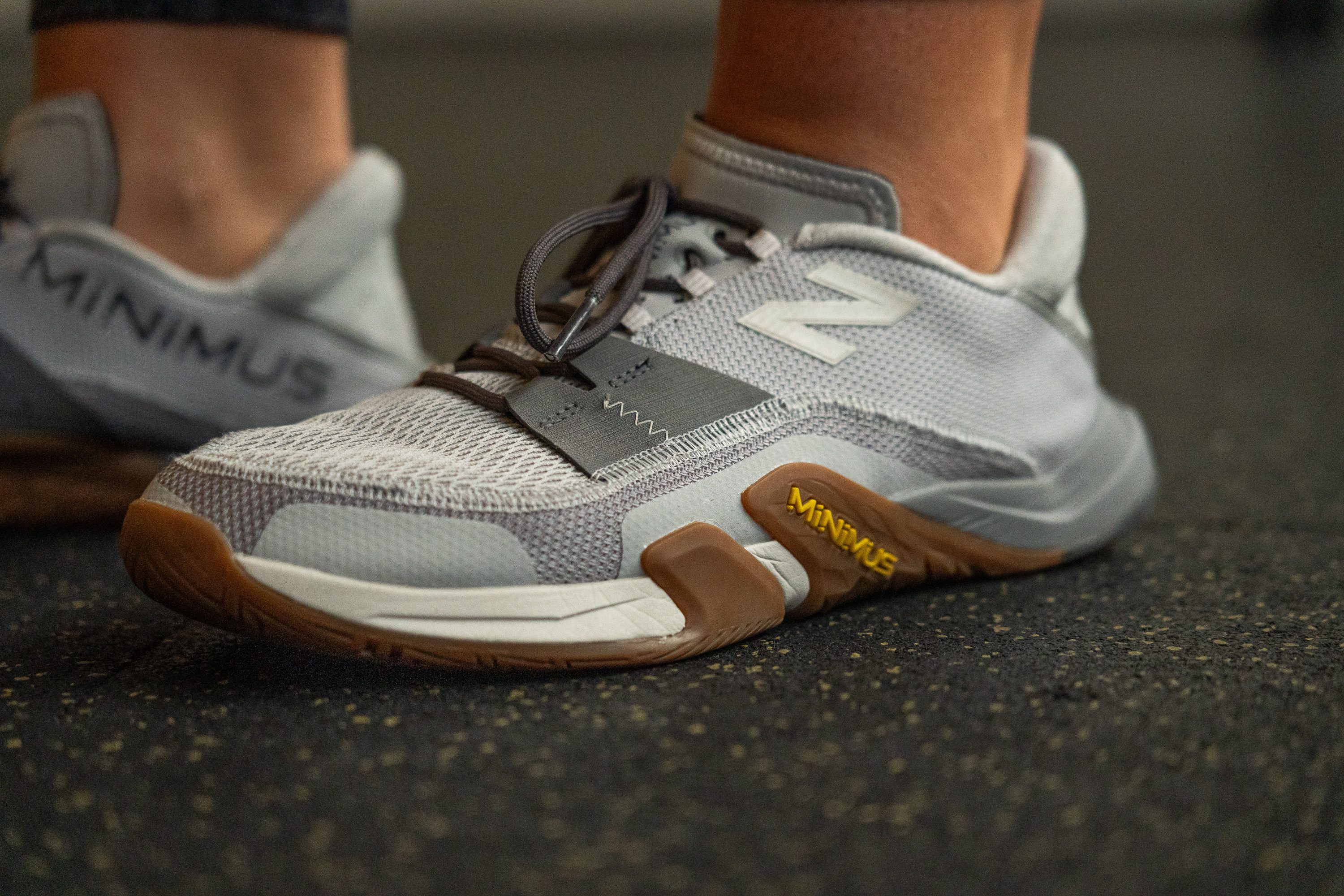
| Minimus TR v2 | 111.6 mm |
| Average | 110.8 mm |
Midsole width - heel
The heel of the Minimus TR v2 doesn't have any significant outriggers showing a narrower-than-average reading of 83.0 mm.

However, there is a pretty bulky heel bumper at the back covered with a protective rubber piece.
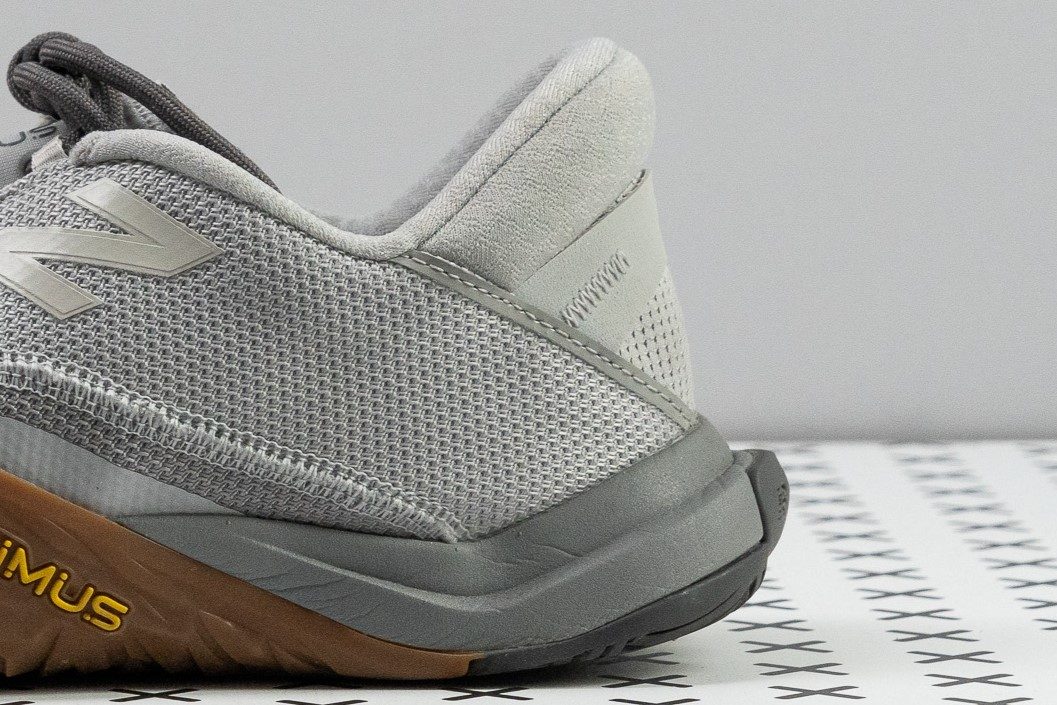
Even though we understand that this is intended for headstand pushups, we also think that this much protrusion is just an overkill. It can do more harm than good getting in the way during other exercises.
| Minimus TR v2 | 83.0 mm |
| Average | 87.1 mm |
Durability
Toebox durability
Unfortunately, the NB Minimus TR v2 fails to promise a very long shelf life. Its soft mesh upper is barely protected by the overlays and its exposed seams beg to be torn by the next bout of burpees.
And just as we expected, the shoe's toebox easily gave in to the abrasive sandpaper tip of our Dremel.

We only kept the toebox durability score at 3 out of 5 because the Dremel didn't go all the way through the fabric.
| Minimus TR v2 | 3 |
| Average | 2.5 |
Heel padding durability
The lining inside the shoe's heel collar didn't give much hope either.
Within only 4 seconds, our Dremel burned through the textile lowering the shoe's heel padding durability score to 2 out of 5.

As much as we love the sock-free option of this NB trainer, it probably won't be long before our toenails scratch a hole in its lining.
| Minimus TR v2 | 2 |
| Average | 2.7 |
Outsole hardness
Even the rubber outsole of the Minimus TR v2 showed mediocre performance in terms of durability.
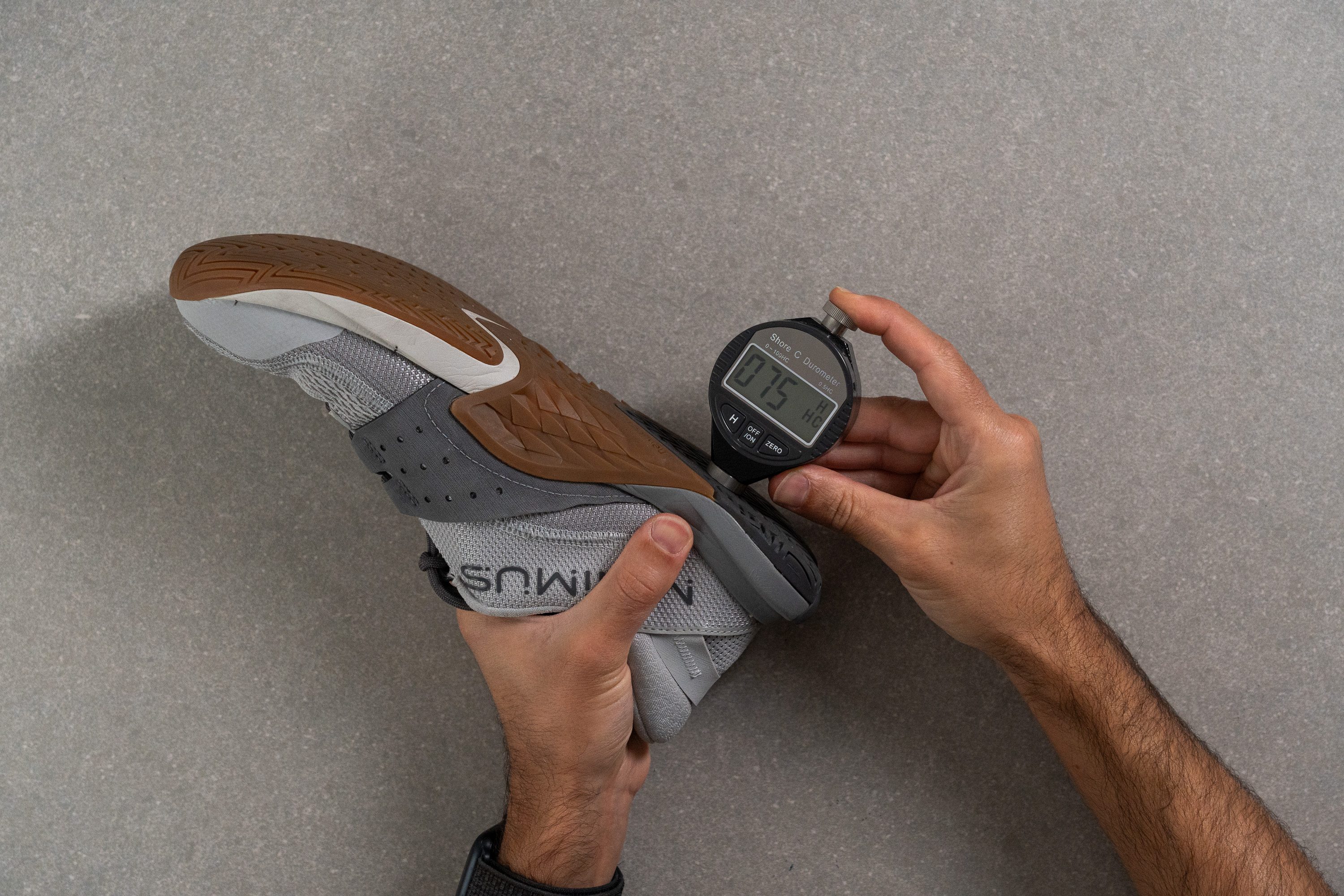
Using a Shore C durometer, we measured the hardness of both gum and black rubber of the trainer. However, the readings were nearly identical with 75.0 HC in the black compound and 71.0 HC in the gum (only 6% softer).
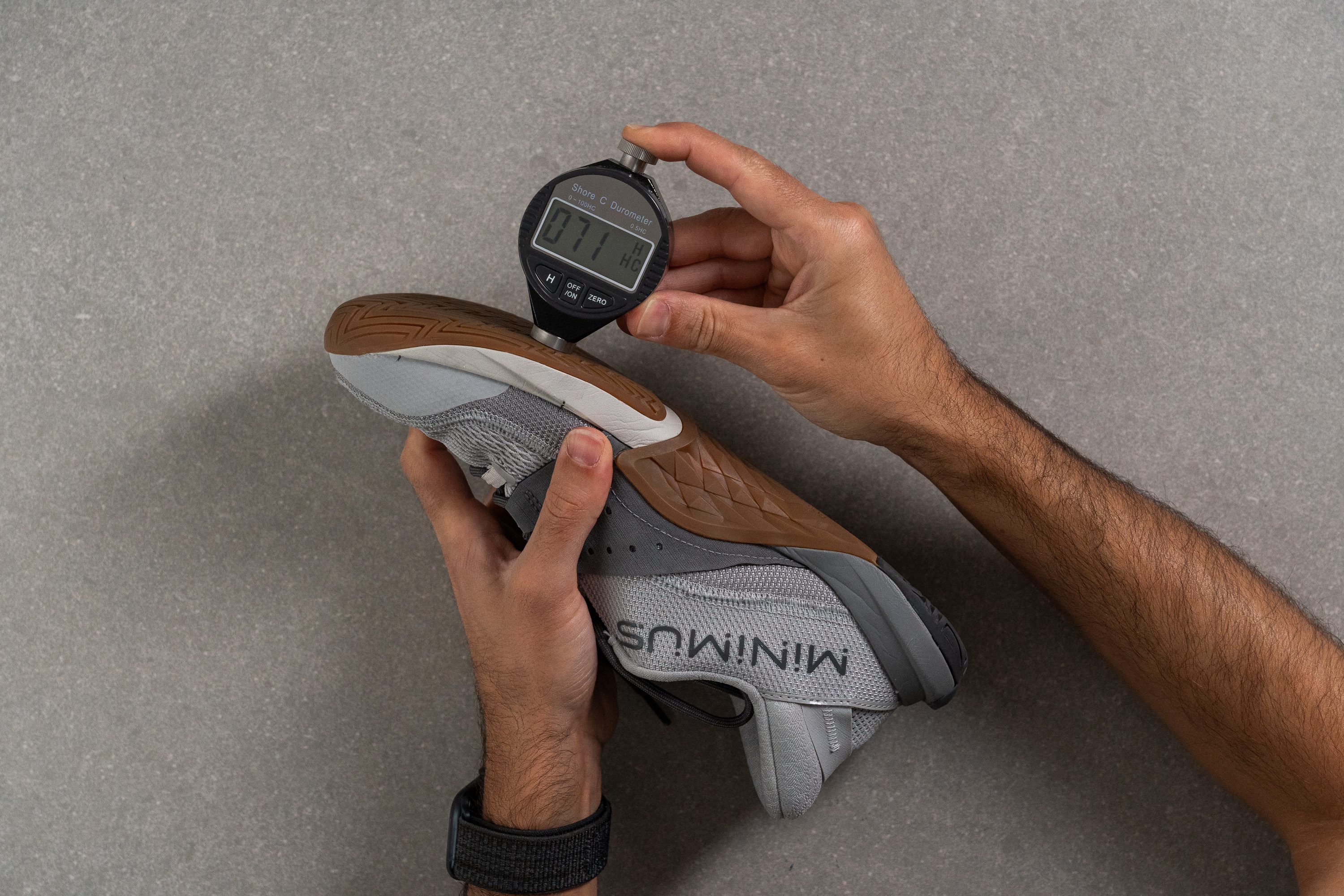
That way, both rubbers turned out to be significantly softer than the average rubber used in training shoes.
| Minimus TR v2 | 75.0 HC |
| Average | 83.3 HC |
Outsole durability
As much as we enjoyed the extra tacky grip of the shoe's softer rubbers, they didn't show the best durability in our Dremel test.
After 22 seconds of exposing the black rubber to sandpaper at 10K RPM speed, we saw a rather deep dent that smoothed out the traction pattern.
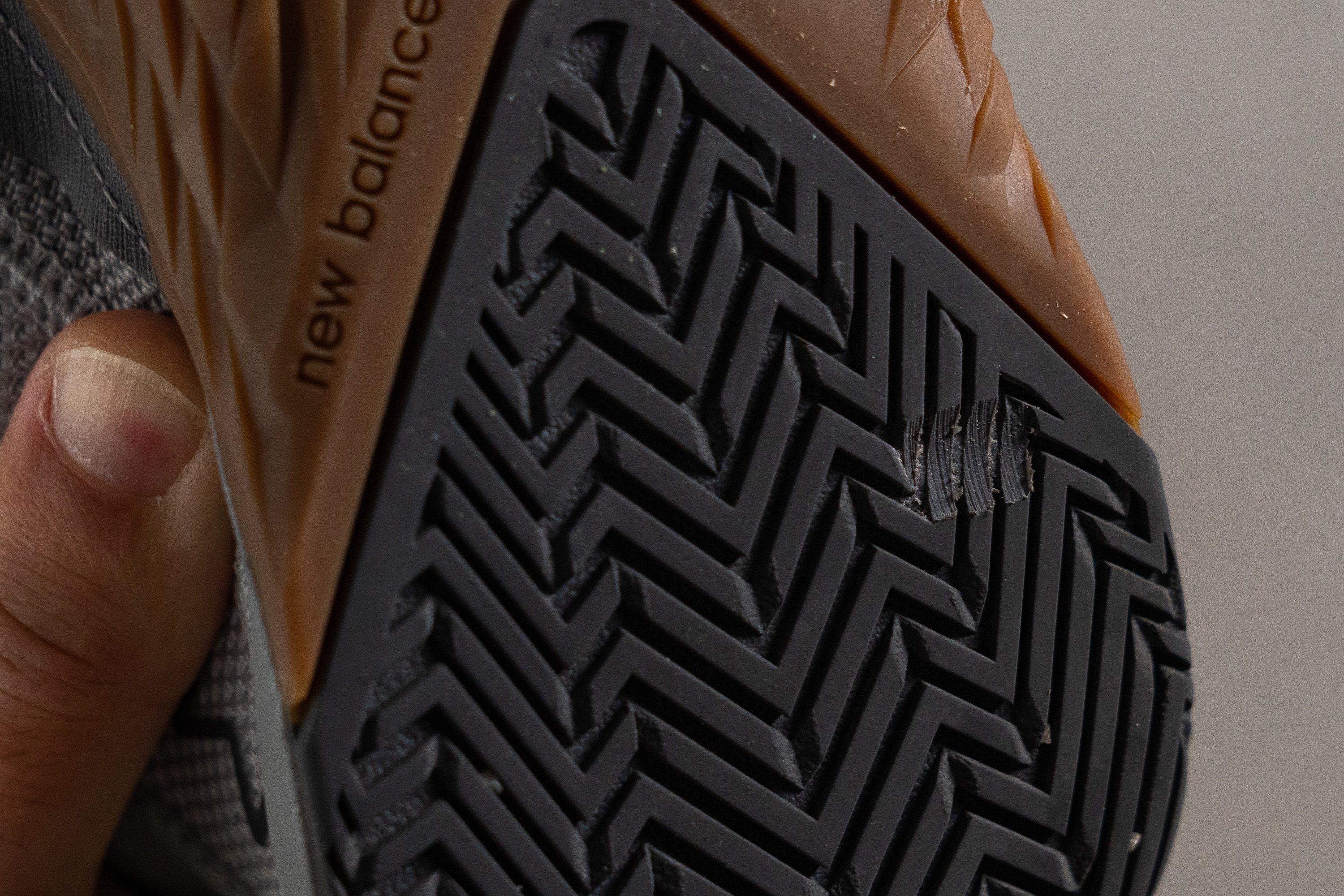
Our tread gauge showed that the dent was indeed deeper than average at 1.6 mm.
Even though the rubberdid not boast the best abrasion resistance, we appreciate that New Balance went the extra mile with protection for rope climbs.

The Minimus TR v2 features both rubber wraps and sturdy midfoot overlays to prevent the rope from burning the shoe. The only caveat is that the protection covers a relatively small area and slashing the rope outside of it means ruining the shoe anyway.
| Minimus TR v2 | 1.6 mm |
| Average | 1.1 mm |
Outsole thickness
At least it's good to know that the shoe's outsole is sufficiently thick - our caliper showed a standard reading of 3.3 mm.

| Minimus TR v2 | 3.3 mm |
| Average | 3.6 mm |
Misc
Insole thickness
The insole is practically non-existent in the NB Minimus TR v2. It is fully integrated into the midsole (non-removable) and only makes up 1.7 mm of the platform.

| Minimus TR v2 | 1.7 mm |
| Average | 4.0 mm |
Removable insole
We think it will be problematic to use a custom orthotic with the NB Minimus TR v2. That's because its in-built insole is not removable and the in-shoe space is quite limited.

| Minimus TR v2 | No |
Tongue padding
Aside from the cushy heel collar, the upper of this New Balance trainer is very minimal. The tongue in particular is some of the thinnest barely showing 2.0 mm on the caliper.
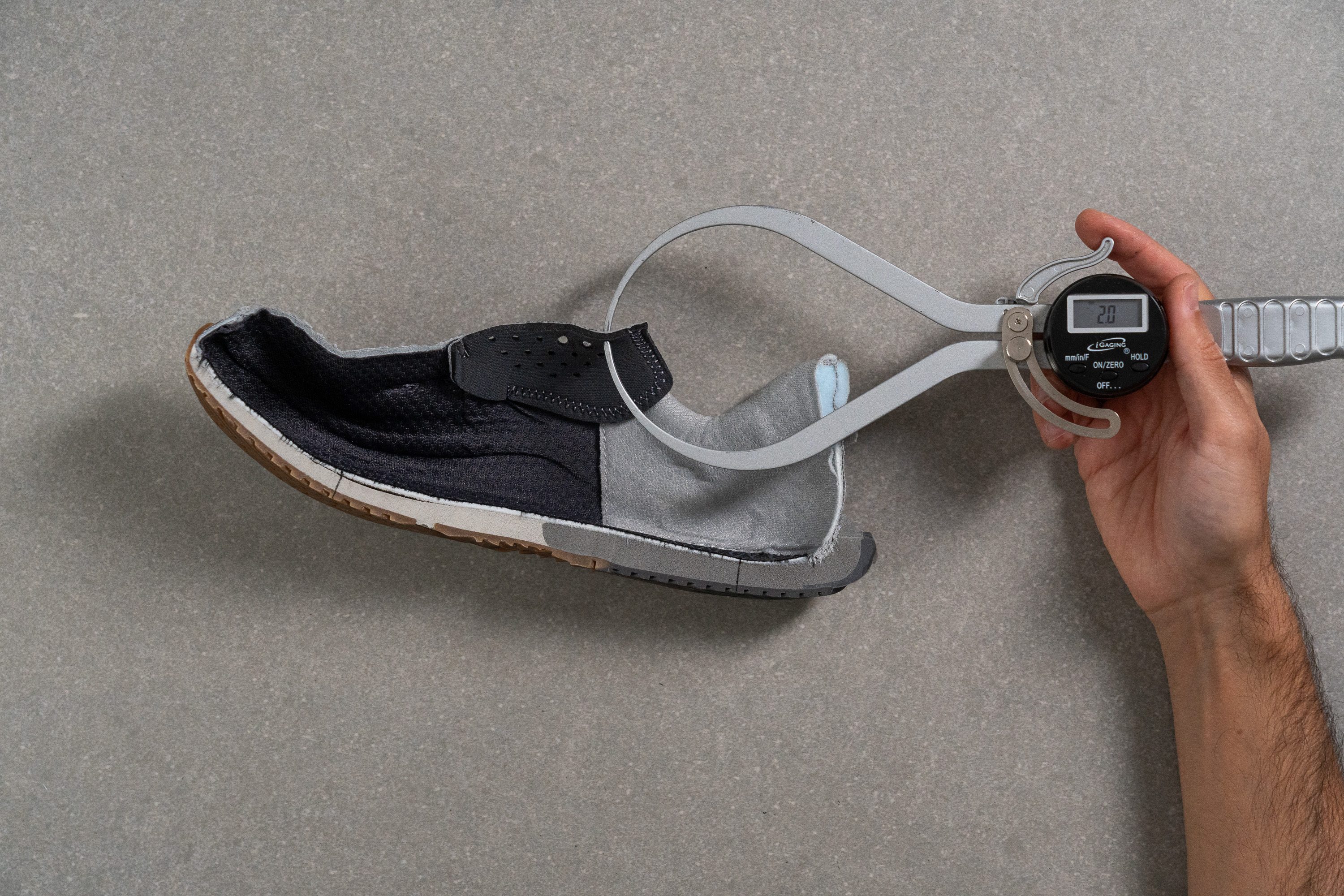
| Minimus TR v2 | 2.0 mm |
| Average | 5.5 mm |
Heel tab
New Balance didn't add any finger loops at the back of the Minimus TR v2.
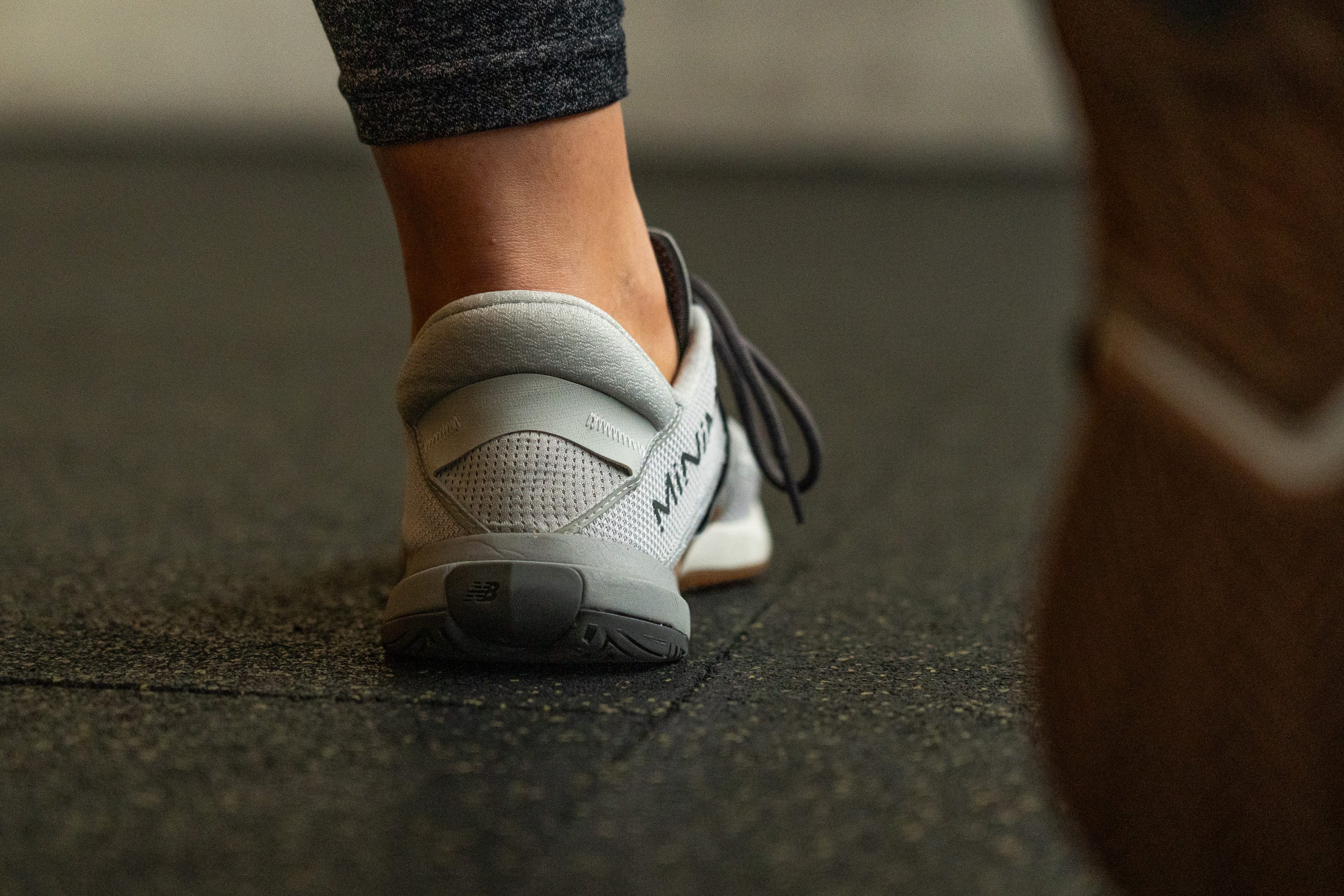
| Minimus TR v2 | None |
Tongue: gusset type
On the downside, the shoe's thin, long, and non-gusseted tongue was quite a nuisance!
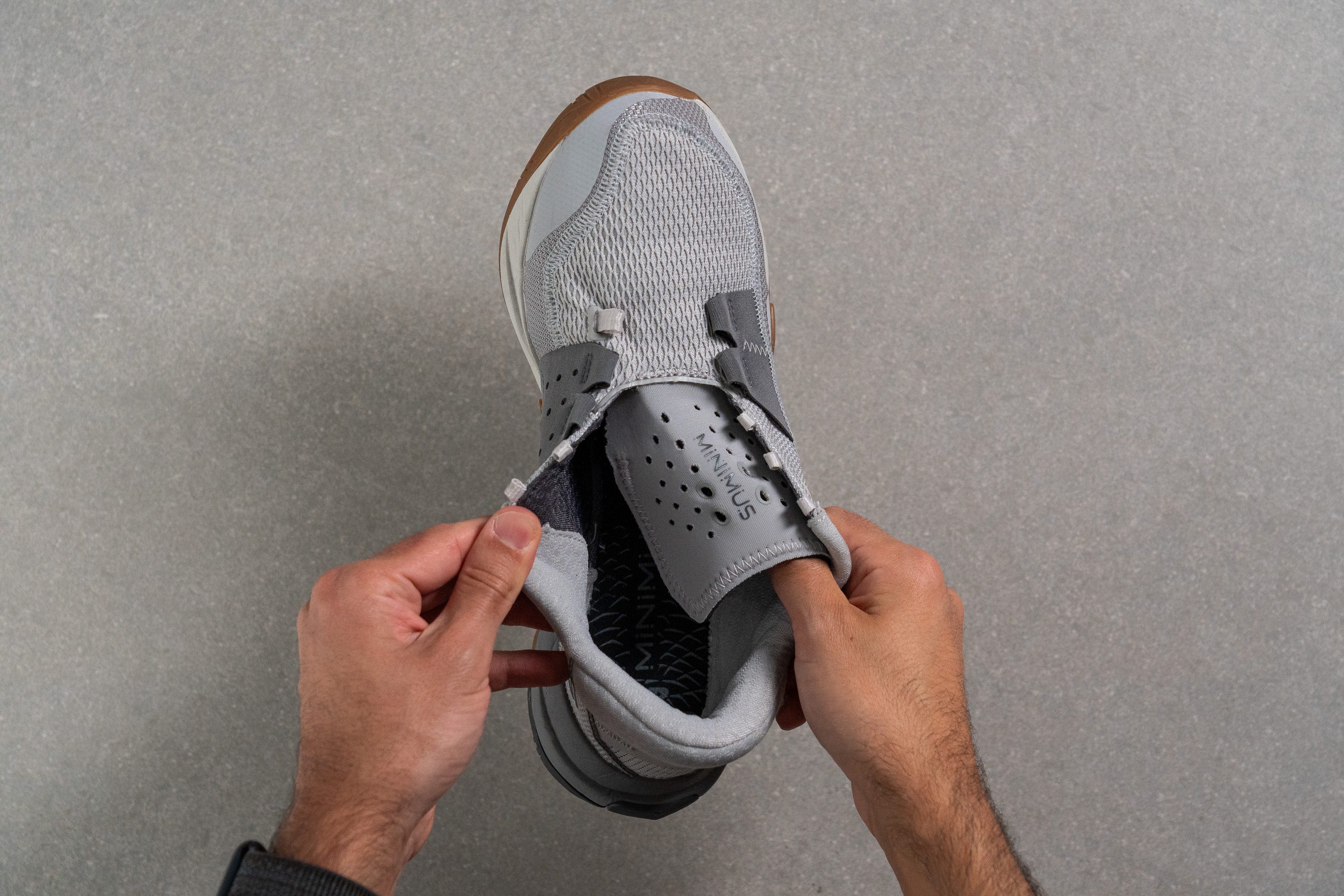
As we got to the more intense part of the workout, the tongue started shifting around and folding over calling for our attention too many times.
| Minimus TR v2 | None |
Price
The retail price of the Minimus TR v2 sits right at the average for training shoes. But because of the shoe's very unique (even experimental) design, we think that it's worth waiting for a discount.
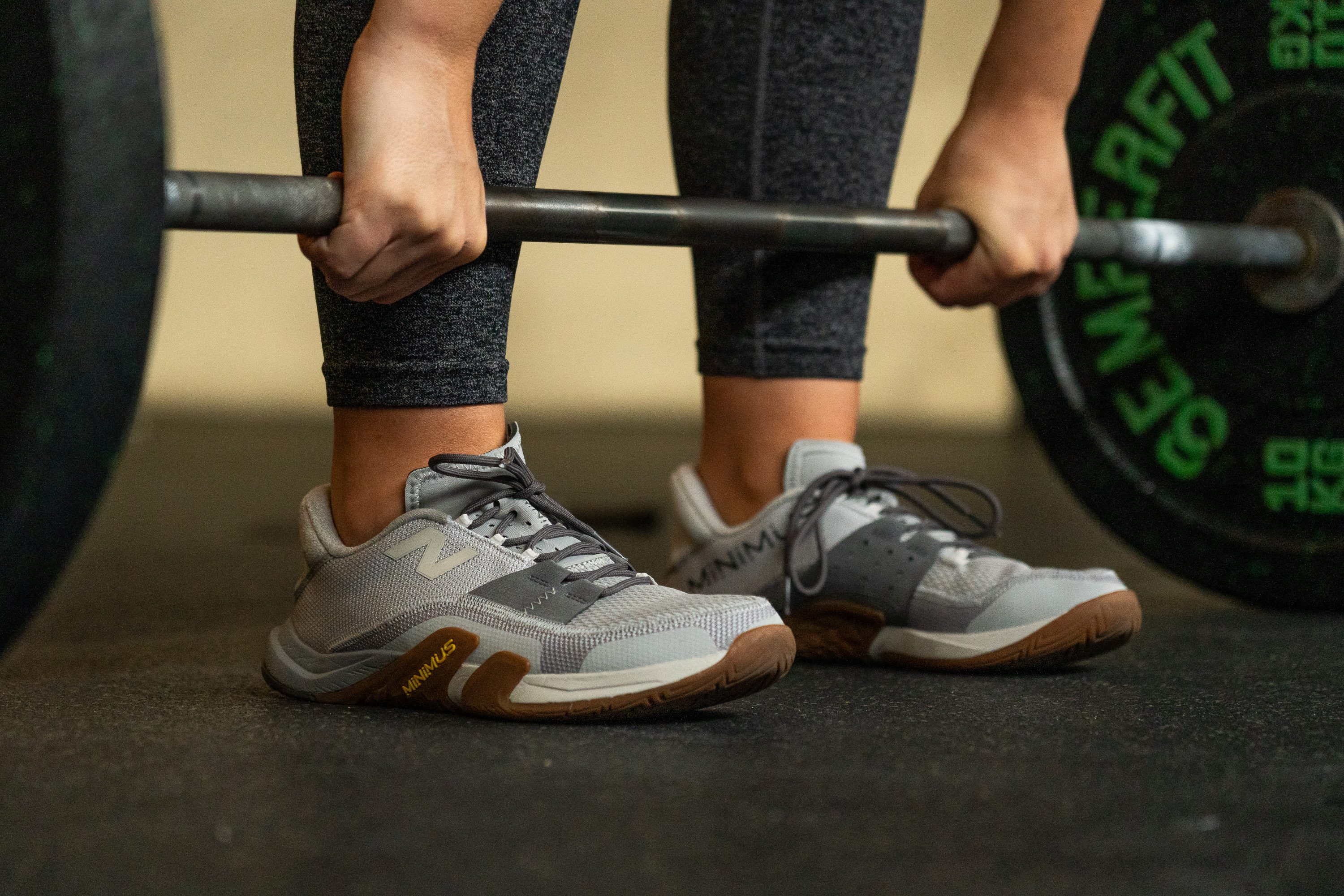
There are a few nuances about this trainer that could potentially become deal-breakers for many people. Especially since you can get so many excellent and reliable trainers at the same price point.
| Minimus TR v2 | $120 |
| Average | $123 |
